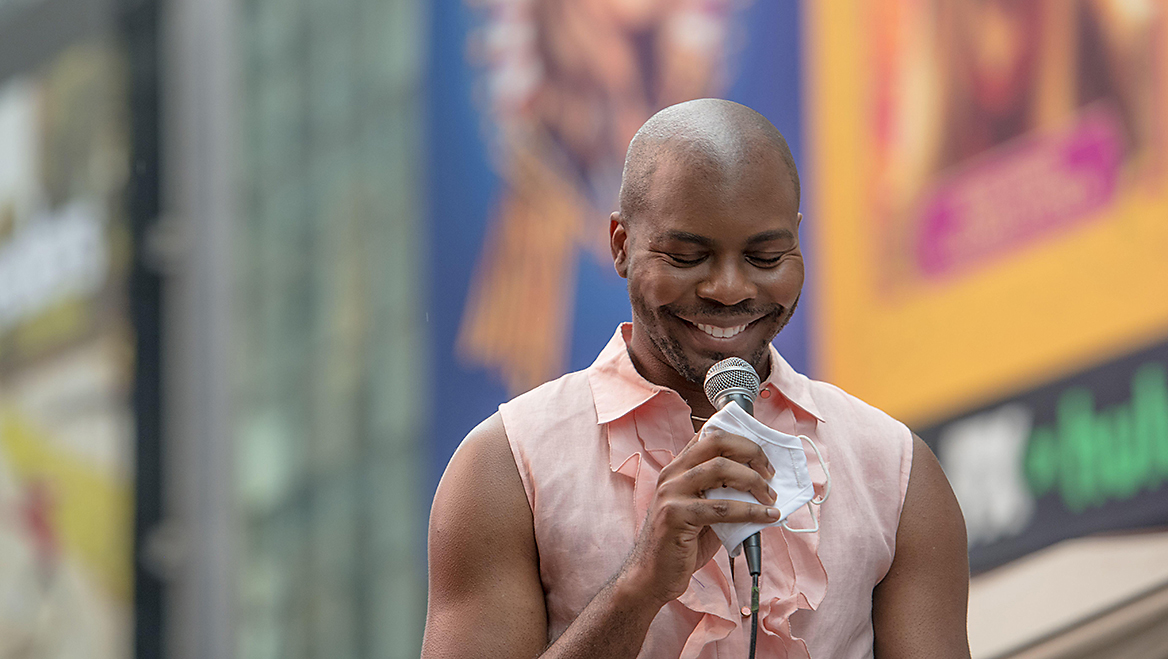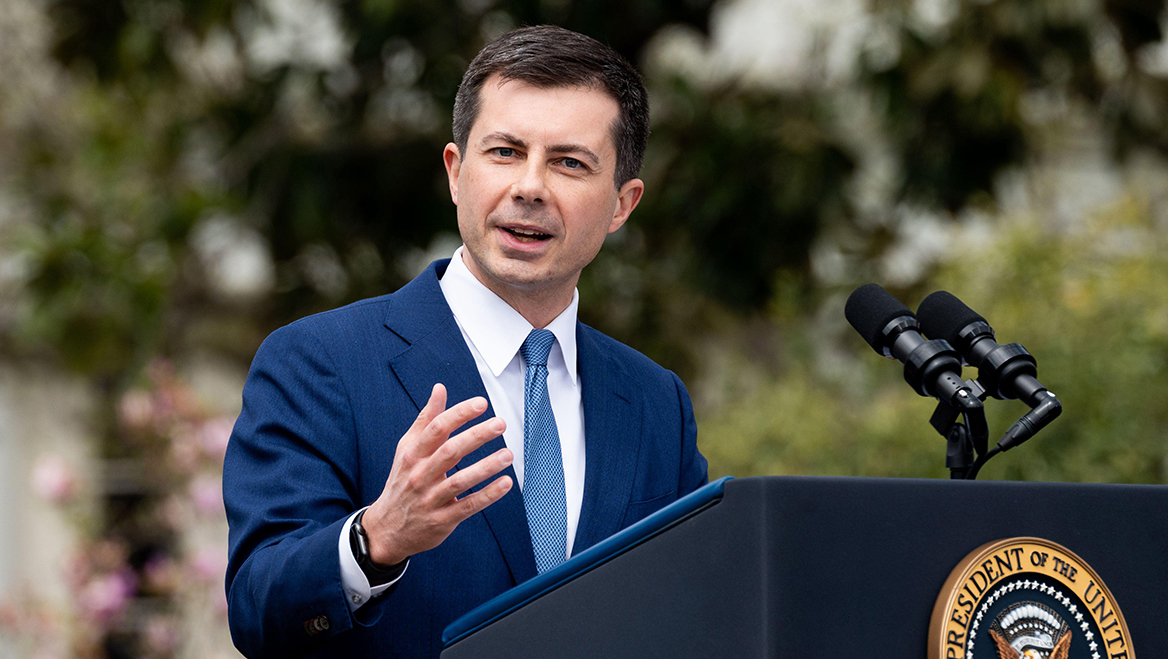Nov. 20, 2023
Planning's 2023 lineup took us to new communities and put a fresh twist on popular topics. From social media to public transit, we explored how planners are making both the field and the places they work more accessible. We covered the policies, reforms, and plans — big and small — that defined planning in 2023. Check out Planning's top 10 most-read stories to see what you might have missed (and drop us a line at PlanMagIdea@Planning.org to let us know what you want to see more of in 2024).

People who are not cisheteronormarive, especially trans people and people of color, face threats of violence in public spaces, making it urgent for planners to consider how to actively protect and include them. Photo by Kevin RC Wilson / Alamy.
10. Why We Need Queer Urbanism
Making progress toward equity means taking a deeper look at the status quo and understanding who is excluded and how. Queer Urbanism is one framework to do so. Author and planner Aaron Greiner offers examples of how public spaces can embrace the needs of the LGBTQ+ community while ensuring safety and inclusion for all.
"Just as queer people exist outside of the 'normal' structures of society, Queer Urbanism follows principles that are outside the 'normal' forces of urban development," Greiner wrote. "It doesn't assume wealth, traditional family structure, and identity. Rather, Queer Urbanism welcomes and celebrates the identities of those who have not had a world made for them."

Taiwo Jaiyeoba looks to community-driven big ideas to change the way cities develop comprehensive plans. Photo courtesy City of Greensboro.
9. Taiwo Jaiyeoba on Equity, Housing Choice, and the Power of Comprehensive Planning
"Comprehensive planning is about addressing inequities through policies — not just coming up with new policies or even building on existing policies that perpetuate inequities," said Greensboro, North Carolina, City Manager Taiwo Jaiyeoba on an episode of People Behind the Plans. Greensboro's groundbreaking comprehensive plan uses an equity lens to rethink mobility, sustainability, housing, and community engagement. Jaiyeoba, a former planner, explains why planners make great city managers and how he navigated heated public meetings about eliminating single-family-only zoning (and still made it happen).

Portland, Oregon, is one of more than a dozen cities convening to take advantage of $1.5 billion in federal urban forestry funding and plan climate-resilient urban forests. Photo by Mel Wood/Shutterstock.
8. Why Urban Canopies Are Growing as Key Climate Infrastructure
Urban heat is an increasing reality across U.S. cities. Even those that have not yet experienced prolonged high temperatures are preparing their streets, buildings, and other infrastructure for hotter days ahead. Extreme heat poses the greatest weather-related health risk of all. These risks tend to be concentrated in low-income communities and communities of color that are home to fewer trees — meaning they have less shade and more air pollution. Cities are expanding their urban forestry programs to plant, restore, and maintain denser canopies — creating a new blueprint for climate equity.

U.S. Secretary of Transportation Pete Buttigieg believes it is crucial to ensure everyone has access to public transportation. Photo by SOPA Images Limited/Alamy.
7. Pete Buttigieg Wants to Make Transit Accessible
U.S. Secretary of Transportation Pete Buttigieg's tenure has had a significant focus on public transit, including maintaining legacy systems such as New York's and Chicago's and channeling more resources to those that are growing. Buttigieg also has set his sights on mobility justice. In this Q&A, he gives Planning an exclusive, detailed look into federal policy efforts to fund accessible transit options — and provides valuable perspective on why it is so crucial to ensure everyone can access public transportation.
"The cost of inaccessibility comes down hardest on the people who are directly affected by it," he said. "It really comes down on everybody and anybody who might benefit from an invention [or] an innovation that comes from a well-employed person meeting their full potential, regardless of disability."

Planners, engineers, and others can draw on a growing community engagement toolkit to actively create equitable cities and public spaces. Photo by Jim West/Alamy.
6. Equitable Community Engagement Requires Learning, Self-Reflection, and Transparency
Community engagement requires planners to first look within before making asks of others. This group of writers offers a blueprint for engagement plans that value residents' expertise and promote genuine connections within the community. Asking yourself about your own biases, narrowing the "us vs. them" gap, and celebrating successes with communities can strengthen the equity planning process, while more diverse teams will be better equipped to point out differences in understanding and vision.

New York City planner Brittany Simmons highlights the emotional impacts of urban design through her posts on TikTok @signedbritt. Photo by Gabby Jones.
5. Follow the Next Generation of Planners on Social Media
Are you on CitiesTok? Young planners and planning enthusiasts are bringing conversations about the way our communities look, feel, and function to social media platforms like TikTok. Planning influencers are giving language to viewers' everyday experiences and engaging them in discussions about walkability, car culture, and how history has shaped the built environment. They also are showing that the profession is diversifying, offering representation and advice to people who may not have considered a career in planning until scrolling through their content.

The plan to breathe new life into St. Lucy's Roman Catholic Church in Jersey City, New Jersey, includes a mixed-use development with market-rate residential, commercial space, and garage parking. Rendering courtesy Michael Graves Architecture.
4. Transforming Empty Churches Into Affordable Housing Takes More Than a Leap of Faith
Faith groups are finding new ways to fulfill their missions through adaptive reuse. With the help of planners, local officials, and advocacy groups like Yes in God's Backyard, congregations are turning unused church properties into homes and community spaces. Some properties, especially those in buzzing markets, are easier to convert than others. Easing restrictive or outdated local regulations such as parking minimums has proven effective in helping houses of worship help others.

Planning resilient communities starts with understanding important climate data and technology tools. Image from the National Risk Index.
3. Climate Tech Tools to Build Community Resilience
In collaboration with the American Planning Association's (APA) Technology Division, Planning launched the Tech Tools series to keep planners on top of new software and more. The first article pulls together GIS tools targeted at climate resilience planning, with features like risk indexing from FEMA and free access to a database of climate adaptation and mitigation measures.

Explore zoning reform tactics that may help curb housing costs. Illustration by Jason Schneider.
2. What Is Zoning Reform and Why Do We Need It?
Zoning reform is an increasingly popular term in and outside of the planning world. As it becomes more widely used, it is important to find shared meaning. Concurrent issues, including a national housing crisis and climate change, are demanding that planners rethink zoning and how it can be part of the solution. Today, zoning reform encompasses policy priorities like eliminating single-family-only zoning, permitting accessory dwelling units, and supporting missing middle housing development. With renewed interest in dense, walkable communities from local and federal governments, planners can lead the charge.

The 20-minute suburb swaps car-centric sprawl for walkability, increased density, and regional connection via transit nodes. Illustration by Skidmore, Owings & Merrill.
1. Meet the 15-Minute City's Cousin: The 20-Minute Suburb
If big cities saw big changes after COVID-19 pandemic restrictions were lifted, then many smaller municipalities saw outsized shifts toward supporting local businesses, increasing walkability, and improving public spaces. Researchers at Skidmore, Owings, and Merrill found that suburbs reaped unexpected benefits from the effort to stay at (or closer to) home. In places with enough demand, planners have seized the opportunity to increase density and revitalize commercial corridors. The 20-minute suburb acknowledges that it isn't quite the 15-minute city, but it can give residents many of the same benefits.




